| 17 March |
• yesterday • tomorrow |
| Optional Memorial of Saint Patrick, Bishop |

Younger daughter of Saint Pepin of Landen and Saint Ida of Nivelles; sister of Saint Begga of Ardenne. Devoted to her faith from an early age, she turned down a noble marriage to pursue the religious life. Following the death of Pepin in 639, and on the advice of Saint Amand of Maastricht, Ida built a double monastery at Nivelles where both she and her daughter retired. Gertrude became abbess about age 20.
Known for her hospitality to pilgrims and the aid given to Irish missionary monks. Gertrude gave land to Saint Foillan, on which he built the monastery at Fosses, Belgium. She helped Saint Ultan in his evangelization. In 656, Gertrude resigned her office in favour of her niece, Saint Wilfetrudis of Nivelles, and spent the rest of her days studying Scripture and doing penance. Mystic and visionary. Died at the significant age of 33, the age of Our Lord at His death.
The cultus of Saint Gertrude spread widely in the Low Countries, neighbouring regions, and England, and folklore attached to her name. As late as 1822, offerings of gold and silver mice were left at her shrine in Cologne, Germany; mice represented souls in Purgatory, to whom she had a great devotion. Patron of gardeners because fine weather on her feast day meant it was time to begin spring planting. Her patronage of travellers comes from her hospitality to pilgrims. She is invoked as a patroness of those who had recently died, who were popularly supposed to experience a three-day journey to the next world; they spent the first night under the care of Gertrude, and the second under Michael the Archangel.
There is a legend that one day she sent some of her subjects to a distant country, promising that no misfortune would befall them on the journey; when they were on the ocean, a large sea-monster threatened to capsize their ship, but disappeared upon the invocation of Saint Gertrude. In memory of this occurence travellers during the Middle ages drank the so-called "Sinte Geerts Minne" or "Gertrudenminte" before setting out on their journey.
626 at Landen, Belgium
17 March 659 at Nivelles, Belgium of natural causes
• against fear of mice
• against fear of rats
• against suriphobia
• against fever
• against insanity
• against mental disorders
• against mental illness
• against mice
• against rats
• cats
• for accomodations
• gardeners
• hospitals
• innkeepers
• mentally ill people
• pilgrims
• poor people
• prisoners
• recently dead people
• sick people
• suriphobics
• to obtain lodging while travelling
• travellers
• widows
• Landen, Belgium
• Nivelles, Belgium
• Wetteren, Belgium
• Zandvliet, Belgium
• Wattenscheid, Germany
• abbess with mice at her feet
• abbess with mice running up her cloak
• abbess with mice running up her pastoral staff
• woman holding a distaff
• woman holding a large mouse
• woman spinning
• woman with a cat nearby
https://catholicsaints.info/saint-gertrude-of-nivelles/

• Apostle of Ireland
• Maewyn Succat
• Patricius, Patrizio
Kidnapped from the British mainland around age 16, and shipped to Ireland as a slave. Sent to the mountains as a shepherd, he spent his time in the field in prayer. After six years of this life, he received had a dream in which he was commanded to return to Britain; seeing it as a sign, he escaped. He studied in several monasteries in Europe. Priest. Bishop. Sent by Pope Celestine to evangelize England, then Ireland, during which his chariot driver was Saint Odran, and Saint Jarlath was one of his spiritual students. In 33 years he effectively converted the Ireland. In the Middle Ages Ireland became known as the Land of Saints, and during the Dark Ages its monasteries were the great repositories of learning in Europe, all a consequence of Patrick's ministry.
between 387 and 390 at Scotland as Maewyn Succat
between 461 and 464 at Saul, County Down, Ireland of natural causes
• warlike (Succat - pagan birth name)
• noble (Patricius - baptismal name)
• against fear of snakes or ophidiophobia; ophidiophobics
• against snake bites
• against snakes
• barbers, hairdressers
• barrel makers; coopers
• blacksmiths
• cattle
• engineers
• excluded people
• miners
• Ireland
• Nigeria (1961)
• Loiza, Puerto Rico
• 29 dioceses
• baptismal font
• demons
• harp
• bishop driving snakes before him
• bishop trampling on snakes
• snakes
• cross
• Purgatory
• serpent
• shamrock
I came to the Irish people to preach the Gospel and endure the taunts of unbelievers, putting up with reproaches about my earthly pilgrimage, suffering many persecutions, even bondage, and losing my birthright of freedom for the benefit of others. If I am worthy, I am ready also to give up my life, without hesitation and most willingly, for Christ's name. I want to spend myself for that country, even in death, if the Lord should grant me this favor. It is among that people that I want to wait for the promise made by him, who assuredly never tells a lie. He makes this promise in the Gospel: "They shall come from the east and west and sit down with Abraham, Isaac and Jacob." This is our faith: believers are to come from the whole world. - from the Confession of Saint Patrick
Christ shield me this day:
Christ be with me,
Christ within me,
Christ with me,
Christ before me,
Christ behind me,
Christ beside me
Christ to win me,
Christ beneath me,
Christ above me,
Christ on my right,
Christ on my left,
Christ in quiet,
Christ in danger,
Christ to comfort me and restore me,
Christ when I lie down,
Christ when I arise,
Christ in the heart of every person who thinks of me,
Christ in every eye that sees me,
Christ in the ear that hears me
- Saint Patrick, from his breast-plate
https://catholicsaints.info/saint-patrick/

• John Nepomucene Zegrí y Moreno
• Johannes Nepomuk Zegrí y Moreno
Son of Antonio Zegrí Martín and Josefa Moreno Escudero. A pious child, he received a good religious education, and felt an early call to the priesthood. Studied at Saint Dionysius Seminary, Granada, Spain. Ordained at Granada on 2 June 1855. Parish priest at Huétor Santillán and San Gabriel de Loja in Granada. Synodal judge. Canon of the cathedral of Malaga, Spain. Visitor of the religious orders in his diocese. Spiritual director of seminarians. Preacher and royal chaplain to Queen Isabel II.
In Malaga on 16 March 1878, Juan founded the Congregation of the Sisters of Charity of the Blessed Virgin Mary of Mercy to work for the spiritual and physical improvement of the poor. The Congregation soon spread throughout Spain. However, a scandal developed when some of the Sisters accused Juan of impropriety, and on 7 July 1888 he was ordered away from the Congregation. A lengthy investigation followed during which Juan kept his silence and obeyed all orders of his superiors. On 15 July 1894 he was cleared of all the false allegations, and though he voluntarily stayed away from the Congregation, he again was recognized as its founder.
11 October 1831 at Granada, Spain
17 March 1905 at Malaga, Spain of natural causes
9 November 2003 by Pope John Paul II
Juan Nepomuceno Zegrí y Moreno, an upright priest of deep Eucharistic piety, understood well how the proclamation of the Gospel needed to become a dynamic reality, able to transform the apostle's life. As a parish priest, he was committed to "visibly providing for all those who, suffering from abandonment, must drink from the bitter chalice and receive nourishment from the bread of tears" (19 June 1859). He developed his redemptive spirituality with this purpose, born from intimacy with Christ and directed towards charity for the neediest. He was inspired, through invocation to the Virgin of Mercy, Mother of the Redeemer, to found the Sisters of Charity of the Blessed Virgin Mary of Mercy, with the aim of making God's love ever-present where there was "just one suffering to heal, one misfortune to console, one single hope to instil in hearts". Today this Institute, following in the footsteps of its Founder, continues its dedication to witness and promote redemptive charity. - Pope John Paul II, at the beatification of Blessed John
Like a good shepherd, going after the lost sheep; like a doctor, healing sick hearts wounded by faults and binding them with hope; like a father, who visibly provides for all of those who, suffering from abandonment, must drink from the bitter chalice and receive nourishment from the bread of tears. - Blessed Juan in a homily describing his vocation to the priesthood
Charity is the only answer to all social problems. - Blessed Juan
https://catholicsaints.info/blessed-juan-nepomuceno-zegri-y-moreno/

• John Sarkander
• Johannes Sarkander
• Martyr of the Confessional
Son of Georg Mathias Sarkander and Helene Kornicz Sarkander. Born in a time and place in the midst of the turmoil of the Protestant Reformation. His father died when Jan was still young, and the family moved to Pribor. He married, but his wife died when they were young, and they had no children.
Educated by Jesuits at Prague, receiving a master of philosophy degree in 1603. Studied theology in Austria. Ordained in 1607 at Grozin. Curate at Boskowitz in 1613. Parish priest at Olmütz in 1616. There he became the center of a struggle for the hearts and souls of the local people; he was supported by Baron von Labkowitz of Moravia, but bitterly opposed by the wealthy anti-Catholic landowner Bitowsky von Bystritz.
The year 1618 saw the start of the Thirty Years War between Catholic and Protestant armies. When Protestant forces occupied Hollenschau, Jan was briefly exiled to Poland, but returned to minister to his oppressed parish flock. Polish forces moved into the area in 1620, and battle seemed imminent. Jan visited the field commander, carrying the Blessed Sacrament in a monstrance as a shield and chastisement. No battles were fought in the area of Hollenshau.
Siezing the opportunity to brand him a spy, and thus explain the lack of attack by the Polish troops, his enemy von Bystritz denounced Father Jan as a traitor. Jan was arrested, taken to Olmütz, and tortured for a confession, for revenge, and to get him to break the seal of the confessional and supply damaging information about his patron and parishioner Baron von Labkowitz. Sarkander was racked, beaten and murdered, but he clung to his faith and gave his tormentors nothing.
20 December 1576 at Skotschau (Skoczow), Austrian Silesia (in modern Poland)
• covered in flammable material and set on fire on 17 March 1620 at Olomouc, Moravia (in the modern Czech Republic)
• remains at the Cathedral of Jan Sarkander at Olomouc (in modern Czech Republic)
Sunday 21 May 1995 by Pope John Paul II at Olomouc, Czech Republic
https://catholicsaints.info/saint-jan-sarkander/
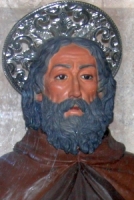
• Conrad di Baviera
• Conrad of Clairvaux
• Conrad of Molfetta
• Conrad of Bayern
• Conrad the Confessor
• Conrad the Guelph
• Corrado, Konrad
9 February (translation of relics; diocese of Molfetta, Italy; Cistercians)
Son of Duke Henry IX of Bavaria. Educated at Wiengarten Abbey in Ravensburg, Germany, and in Cologne, Germany. Joined of the Cistercians c.1124. Spiritual student of Saint Bernard of Clairvaux in Cologne in 1147. Pilgrim to the Holy Lands as part of the spiritual Crusade, and died on the road.
1105 Veitsburg, Baden-Württemberg (in modern Germany
• 1154 at the Santa Maria ad Cryptam Benedictine monastery near Modugno, Italy of natural causes
• interred in a cave near the monastery, a traditional resting place for the monastery's dead
• relics translated to the cathedral of Molfetta in 1785
• reliquary restored and relics re-enshrined in August 2007
1832 by Pope Gregory XVI (cultus confirmation)
• Molfetta, Italy, city of
• Molfetta, Italy, diocese of
• Cistercian monk holding the cathedral of Molfetta, Italy
• man in sackcloth with a crown and scepter
https://catholicsaints.info/blessed-conrad-of-bavaria/
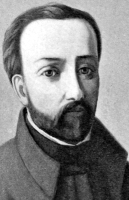
19 October as one of the Martyrs of North America
Nephew of the Jesuit missionaries Charles and Jerome Lalemant. Entered the Jesuits in Paris, France on 24 March 1630. Missionary, arriving in Canada on 20 September 1646. Assigned as assistant to Saint John de Brebeuf among the Huron in early 1649, he was soon martyred with him. One of the Martyrs of North America.
10 October 1610 at Paris, France
• tortured to death over the course of three hours on 17 March 1649 at the Saint Ignatius mission in the Huron country, Canada
• interred by fellow priests at Saint Mary's mission
• some relics moved to Quebec in the spring of 1650
29 June 1930 by Pope Pius XI
https://catholicsaints.info/saint-gabriel-lalemant/

Maria Bárbara of the Holy Trinity
Exiled from Austria for political reasons, she arrived in Rio de Janeiro, Brazil on 9 November 1848. Drawn to the religious life, she founded the Congregation of the Sisters of the Immaculate Heart of Mary on 8 May 1849.
27 June 1818 in Vienna, Austria
• 17 March 1873 in Catumbi, Rio de Janeiro, Brazil of natural causes
• relics in the chapel of São Raphael, Rua Riachuelo, 508, Porto Alegre, RS, Brazil
6 November 2010 by Pope Benedict XVI
https://catholicsaints.info/blessed-maria-barbara-maix/
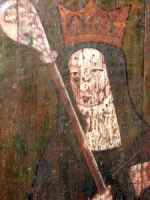
• Withburgh of Dereham
• Vitburga, Wihtburh, Withburga
Born a princess, the youngest daughter of King Anna of East Anglia (part of modern England). Following the death of her father in battle, Withburgh became a nun and lived as an anchoress at East Dereham, Norfolk, England. Founded a convent there.
c.743
https://catholicsaints.info/saint-withburgh/
• Aregl of Châlon-sur-Saône
• Agrele of Châlon-sur-Saône
Son of a Gallo-Roman senator. Bishop of Châlon-sur-Saône, France in 532; he governed the diocese for 48 years. Friend of Saint Gregory of Tours who wrote glowingly of him. Known for his simple, austere personal life, and his devotion to the spiritual lives of his flock.
c.497
580 at Châlon-sur-Saône, France of natural causes
https://catholicsaints.info/saint-agricola-of-chalon-sur-saone/
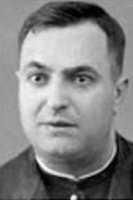
Priest in the archdiocese of Tarragona, Spain. Martyred in the Spanish Civil War.
12 February 1899 in Dosaiguas, Tarragona, Spain
17 March 1937 in Barcelona, Spain
• 13 October 2013 by Pope Francis
• beatification celebrated in Tarragona, Spain
https://catholicsaints.info/blessed-josep-mestre-escoda/
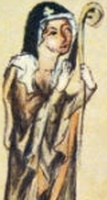
Daughter of Saint Hedwig of Silesia and Duke Henry I. Engaged to the Count Palatine Otto of Wittelsbach, but he died before the wedding. Cistercian nun and then abbess in Trzebnica, Poland.
c.1200
December 1268 in Trzebnica, Poland of natural causes
https://catholicsaints.info/blessed-gertrude-of-trzebnica/
Rich nobleman of Alexandria, Egypt. Friend and financial supporter of Origen. Imprisoned for his faith in the persecutions of Maximinus but survived. Confessor of the faith.
c.250 of natural causes
https://catholicsaints.info/saint-ambrose-of-alexandria/
Cypriot monk. During the reign of the iconoclast emperor Constantine Copronymus, Paul was ordered to trample a crucifix. He refused, and was tortured and martryed.
roasted to death hanging upside down over a slow fire in 775
https://catholicsaints.info/saint-paul-of-cyprus/
Thomasellus, Tomasello
Dominican. Student of Saint Thomas Aquinas.
1242 at Etruria, Italy
• 1270 at Perugia, Italy of natural causes
• buried in the Dominican church in Perugia
https://catholicsaints.info/saint-thomasello/
Martyrs of Serapis
An unknown number of Christians who were martyred together by a mob of worshippers of the Graeco-Egyptian sun god Serapis.
c.392 in Alexandria, Egypt
https://catholicsaints.info/many-martyrs-of-alexandria/
Monk. Founded the abbey at Llandinam, Powys, Wales, and served as its first abbot.
520 of natural causes
https://catholicsaints.info/saint-llinio-of-llandinam/
Cistercian monk from the Clairvaux Abbey. Cardinal-bishop of Palestrina in 1141.
1144
https://catholicsaints.info/saint-stephen-of-palestrina/
Recluse in 12th century Saint Gall, Switzerland.
https://catholicsaints.info/saint-diemut-of-saint-gall/
Martyr.
2nd century Rome, Italy
https://catholicsaints.info/saint-theodore-of-rome/
Martyr.
https://catholicsaints.info/saint-alexander-17-march/
CatholicSaints.Info Portable Edition